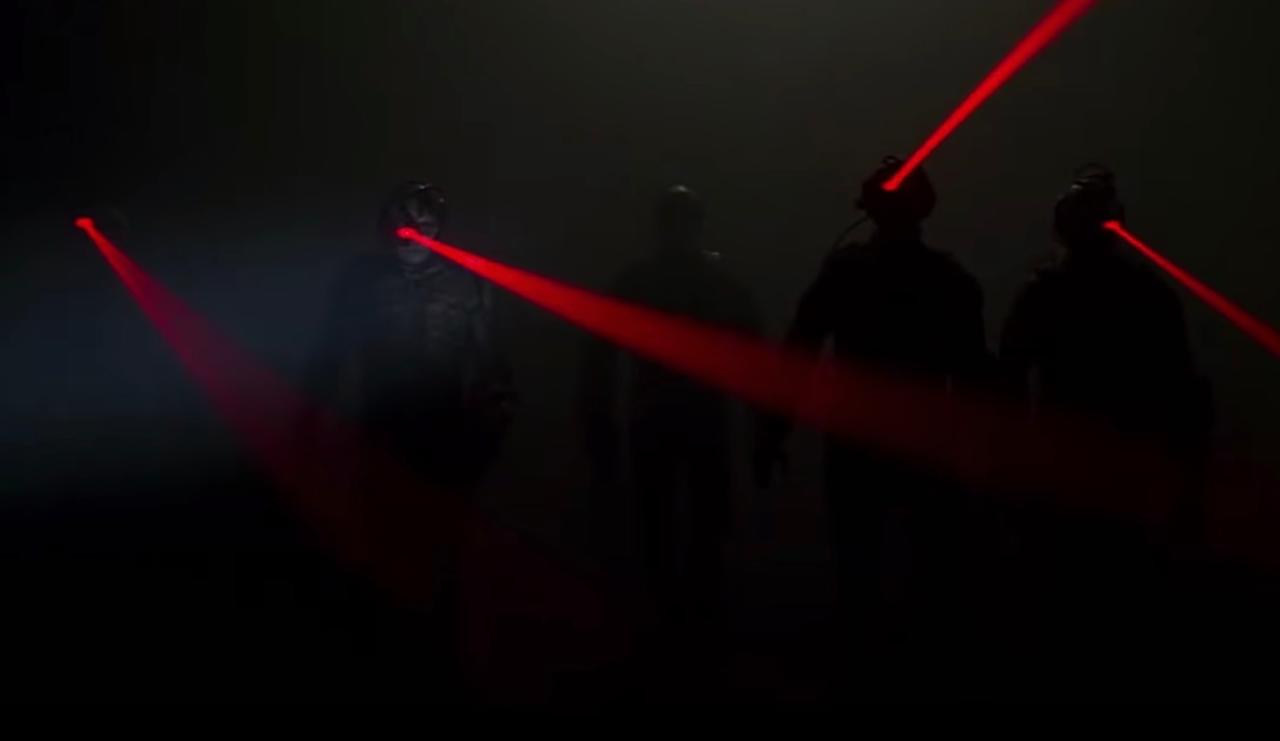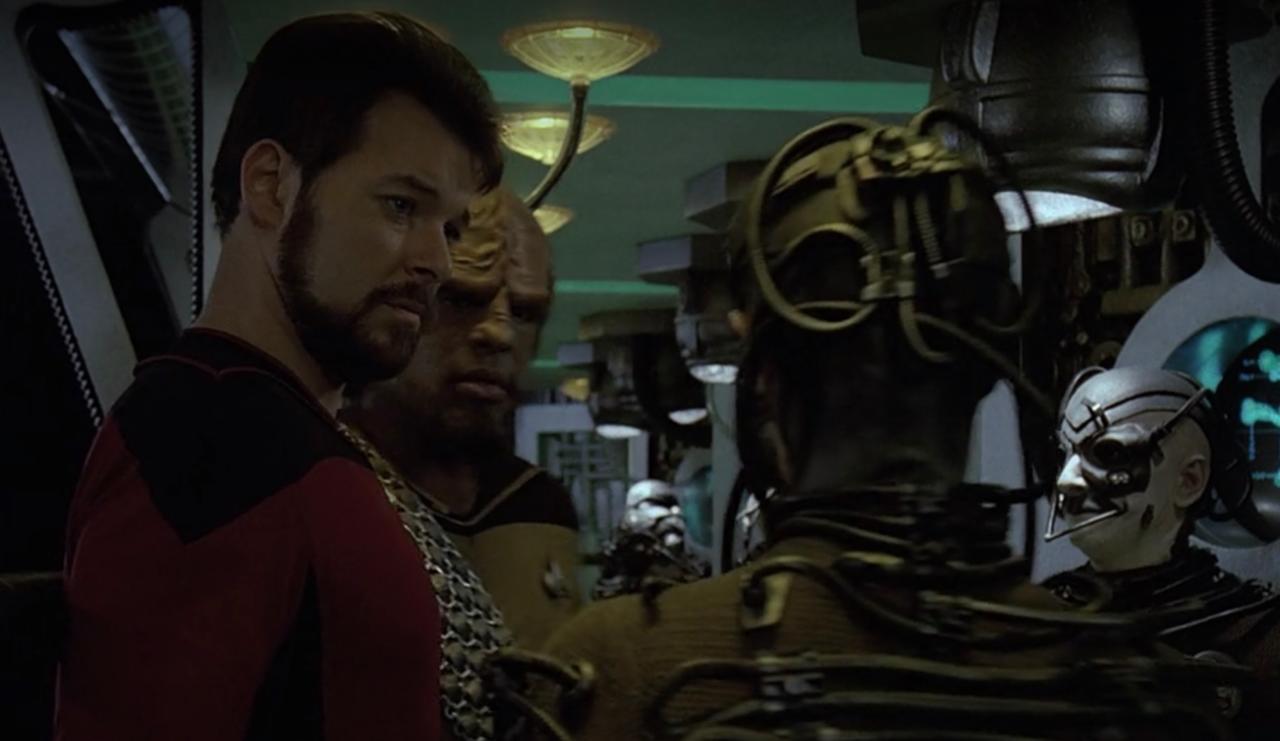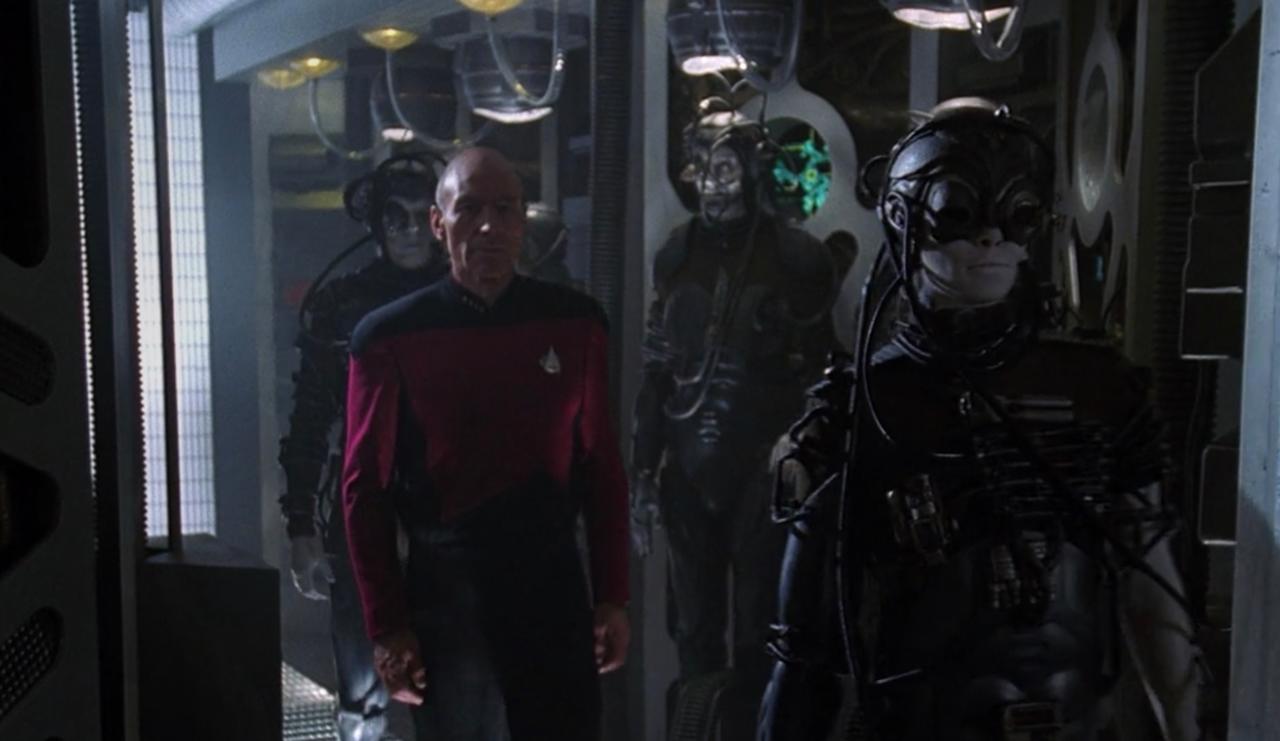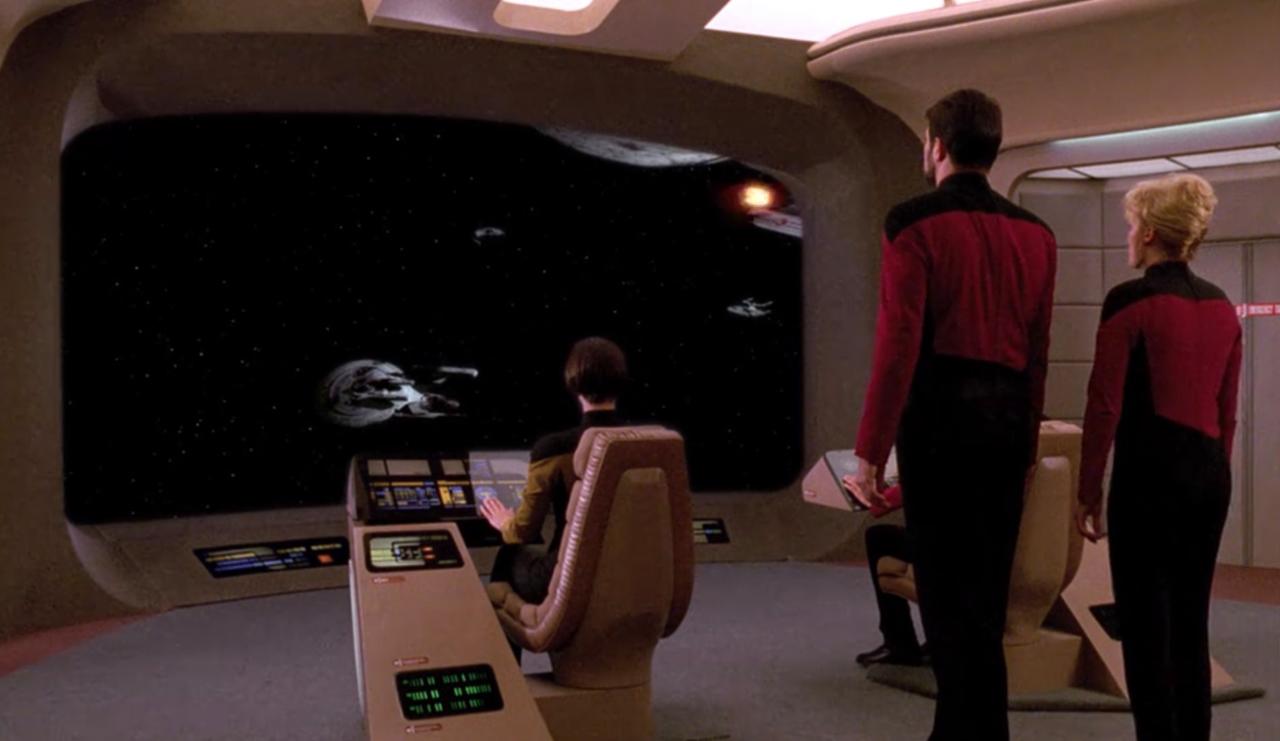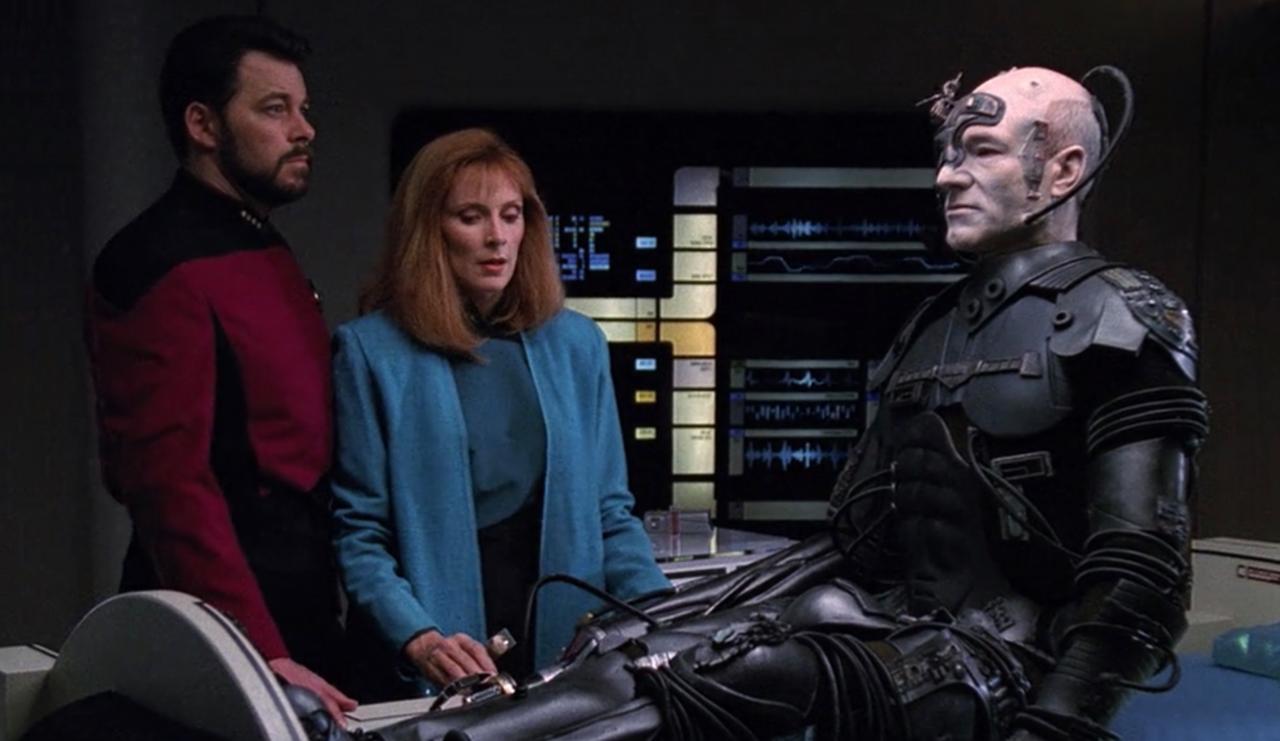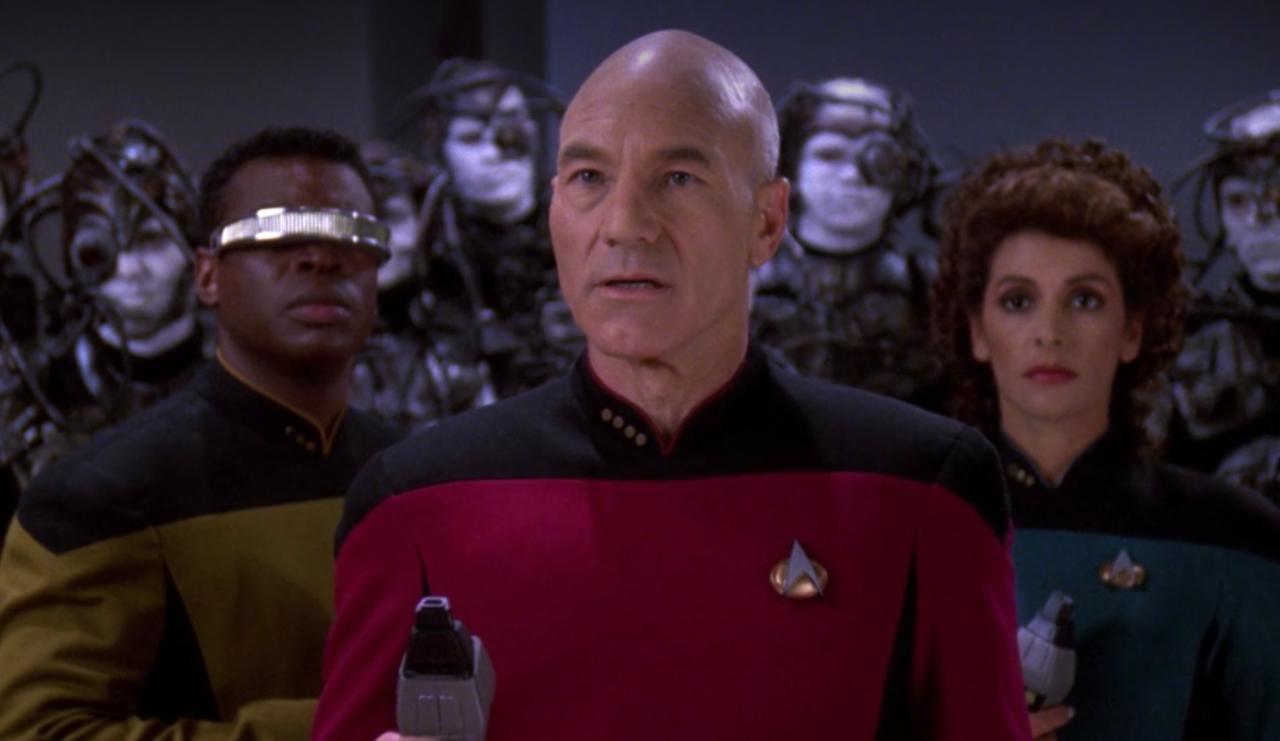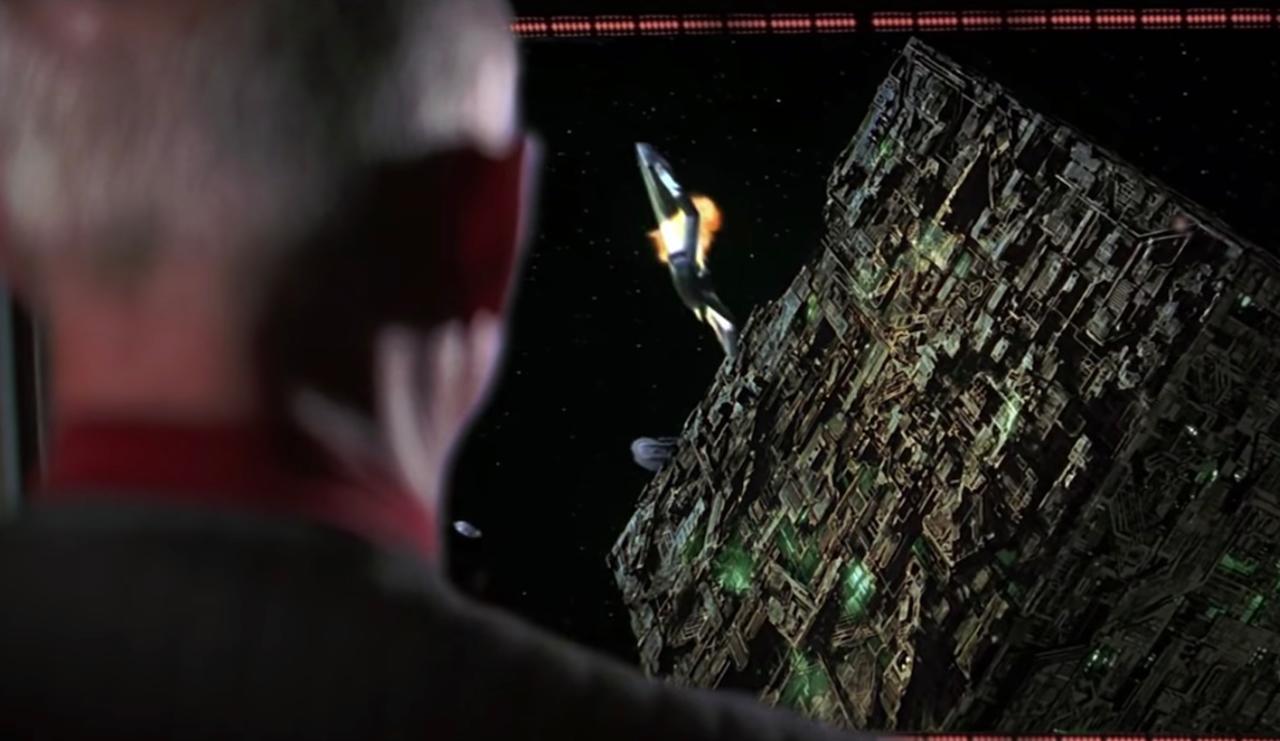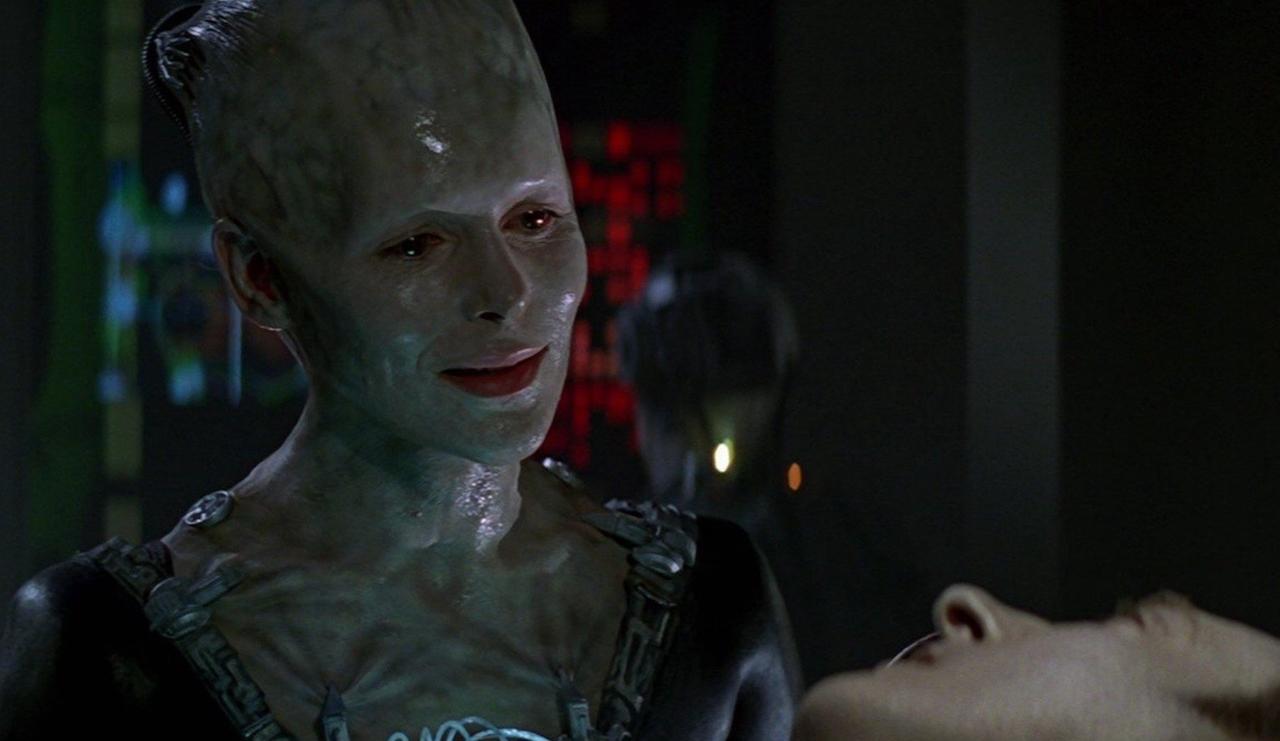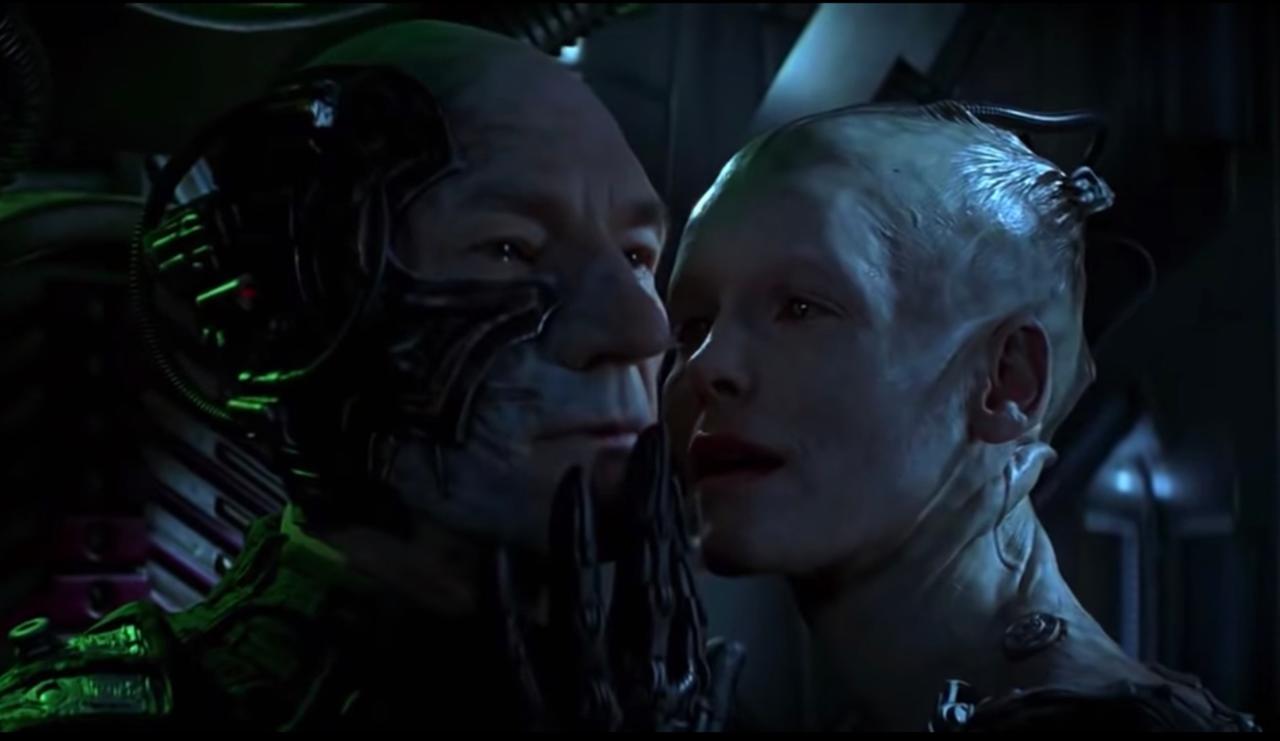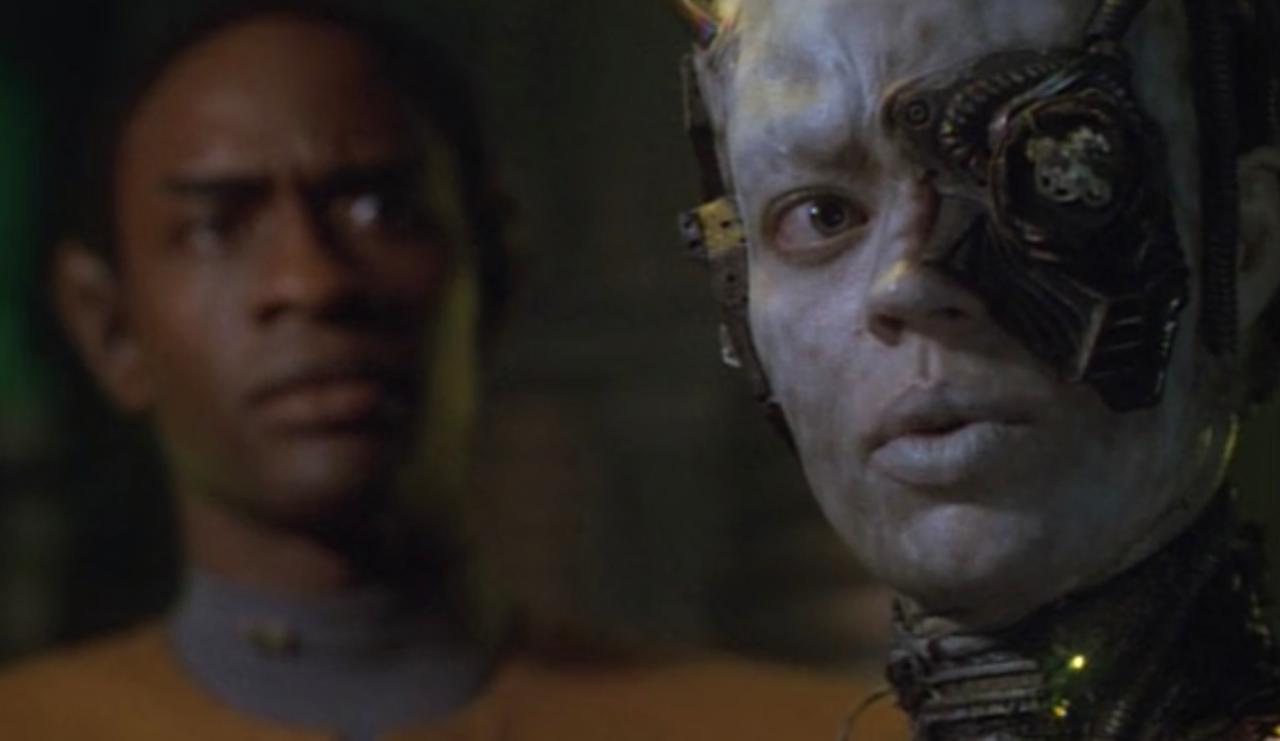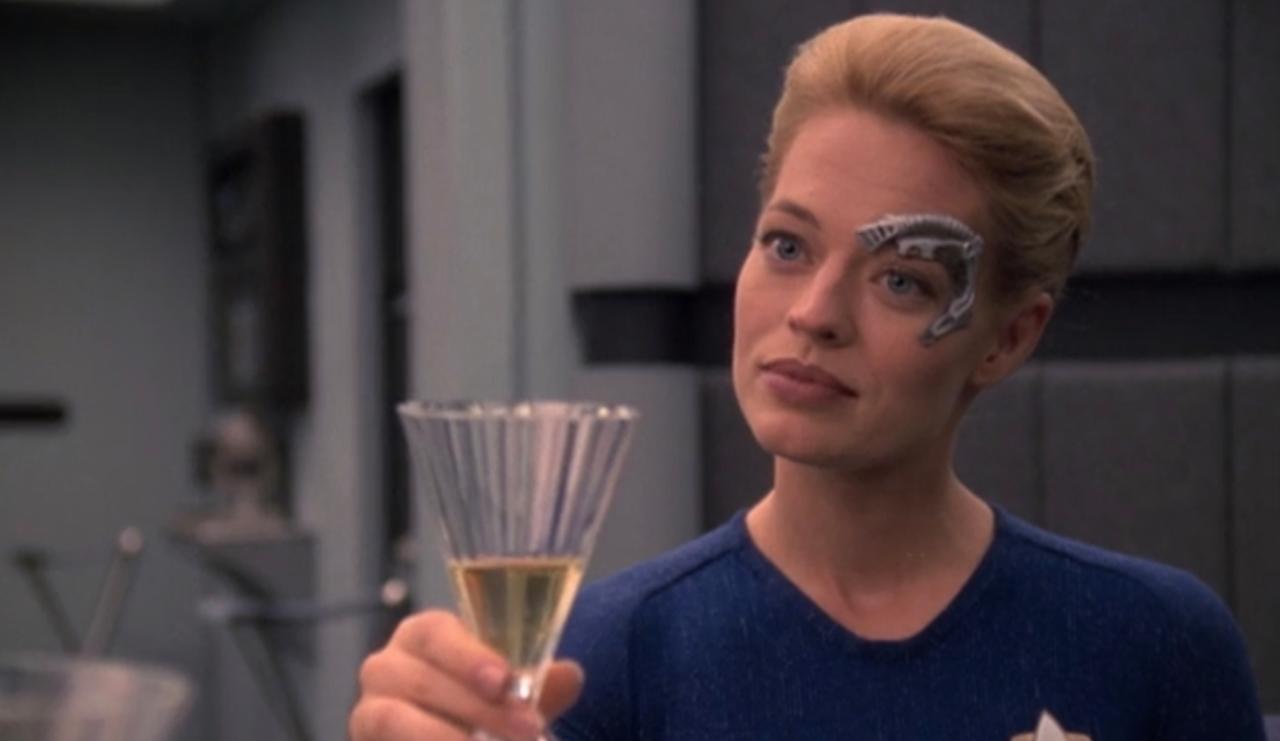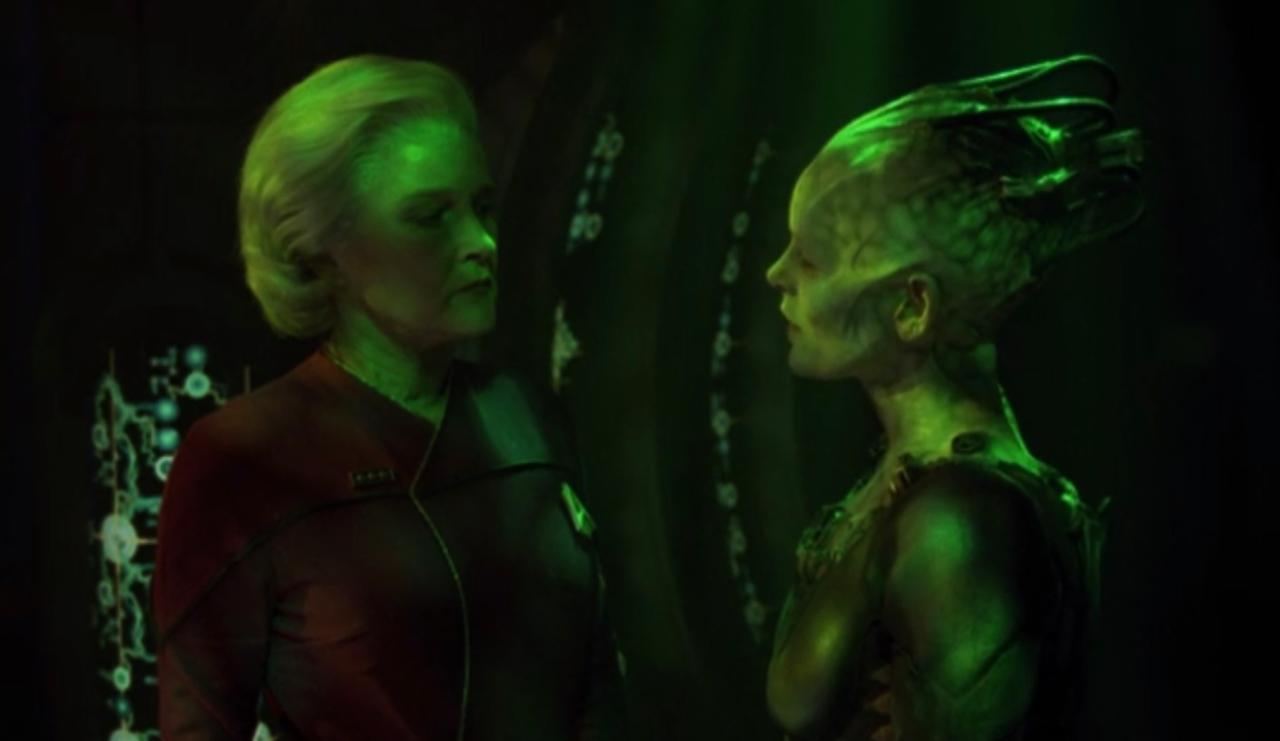Star Trek: Picard, Seven Of Nine, And The Borg - What You Need To Know
GameSpot may receive revenue from affiliate and advertising partnerships for sharing this content and from purchases through links.
Resistance is futile.
Star Trek: Picard's fifth episode is available now on CBS All Access, and with the arrival of Seven of Nine, the role of the Borg in the next chapter of Jean-Luc Picard's life continues to expand. The show makes heavy use of Trek history and backstory, especially when it comes to the Borg--so we've got a recap of who the Borg are, what assimilation is all about, when Starfleet first encountered them, and more. And for an idea of what to expect from "Remembrance," "Maps and Legends," "The End is the Beginning," "Absolute Candor," and "Stardust City Rag," check out our Picard Episode 1 review, our Picard Episode 2 review, our Picard Episode 3 review, our Picard Episode 4 review, and our Picard Episode 5 review.
Star Trek: Picard gives us a look at Picard's life after the end of The Next Generation and his retirement from Starfleet. Picard's story was continued in four Star Trek movies, and the series picks up 23 years after the events of Picard's last appearance on screen in Star Trek: Nemesis.
In the time since, Picard retreated to his family vineyard in France. But when a mysterious woman shakes him out of his complacency, he goes back to space and realizes it's where he was always meant to be.
Star Trek: Picard
- Star Trek: Picard Season 1 Review - All Good Things
- Star Trek: Picard Episode 9 "Et in Arcadia Ego, Part 1" Breakdown & Easter Eggs
- Star Trek: Picard Episode 9 - 13 Easter Eggs And References
- + Show More Star Trek: Picard Links (6)
- Star Trek: Picard Episode 5 Review - A Successful Assimilation
- Star Trek: Picard Episode 4 Review - Course Laid In
- Star Trek: Picard Episode 3 "The End Is the Beginning" Breakdown & Easter Eggs
- Star Trek: Picard Episode 3 Review - Engage, Already
- Star Trek: Picard - What's The Problem With Picard's Brain?
- Star Trek: Picard Episode 2 Review - Set On Stun
Here, for your edification, is everything you need to know about the Borg, the greatest and most fearsome of Picard's foes. And if you liked this, check out these promotional photos of Star Trek: Picard, and our roundup of Picard's most badass moments.
Disclosure: CBS is GameSpot's parent company.
1. What are the Borg?
The Borg are a cybernetic race--humanoids, augmented with technology. Unlike other alien races with home planets (the Klingon homeworld is Q'onoS, the Bajoran homeworld is Bajor), the Borg have no known common point of origin. We only know that they originated in the Delta Quadrant, and they are composed of thousands of different species, all working as a single hive mind. Their backstory is deliberately murky, which adds to their mystique and intimidation.
Their overarching goal is to assimilate other species into their own via use of specialized technology. When an individual is assimilated by the Borg, he or she surrenders all memories, knowledge, and expertise to the entire collective. In this way, by adding the biological and technological distinctiveness of other cultures to their own, the Borg strive to achieve a twisted, dystopian sort of perfection.
The Borg's primary method of transport is the massive Borg cube, which is outfitted with advanced weaponry and defenses. It is piloted by the collective, and it can self-repair in the event of physical damage.
2. How does assimilation work?
Assimilation is a brutal process. A victim is injected with nanoprobes--microscopic robots that can alter, inhibit, and even repair the body's cells. These nanoprobes multiply; the average Borg drone has millions of them throughout its body.
The nanoprobes coalesce and form cybernetic implants throughout the victim's body, which are then supplemented by additional external attachments. Depending on the purpose of the new drone, the Borg may extract and replace the eye with a specialized eyepiece, or may sever the arm and replace it with a tool.
Assimilation takes a visible toll on the victim's appearance; the victim's hair falls out, and the skin takes on a greyish, fishbelly white hue.
3. What makes the Borg so difficult to defeat?
Because they are a single hive mind, the Borg simply act; They do not need to confer with anyone or debate a course of action. They have the accumulated knowledge of thousands of species, which means they can anticipate the likely outcome of most engagements before they begin.
They have no sense of fear, which means they are invulnerable to emotional missteps. They don't fear death; a single drone's life is entirely expendable. The Borg play the long game; they're willing sacrifice thousands of drones if it means that they'll be triumphant in the end.
And most importantly, the Borg adjust and adapt to any and all methods of war. Aside from the fact that Borg tech is extremely advanced, a tactical maneuver that is successful once will not work a second time. One drone may die after being shot by a phaser, but every subsequent drone will be able to block phaser shots of the same frequency with energy shields.
It is no wonder that with such advantages, the Borg's most infamous quote is, "Resistance is futile."
4. Do the Borg have any weaknesses?
Were you to encounter the Borg, unpredictability would be your friend; the Borg would be susceptible to any tactical strategy they haven't previously seen.
Starfleet has designed weapons specifically to battle the Borg. The Defiant, for example, was one such starship; its phaser cannons rotated their frequencies so that the Borg could not adapt. But brute strength is not a long-term solution against such vast numbers.
The Borg's confidence is their undoing. One of the Borg's quirks is that they do not attack unless they see their targets as imminent threats. Borgs will often board ships or beam down to planets just to survey and scan the technology and biology; they will not appear aggressively hostile at first. And during this small window of opportunity, Starfleet crew members have boarded Borg cubes and walked around unencumbered. This is an excellent opportunity to gain tactical advantage before the fighting inevitably starts.
The Borg are particularly susceptible to tech-based attacks.The most successful ones have come from scenarios where Starfleet captured a drone, established a neural link with it, and compromised the Borg's defense systems.
There have also been scenarios, suggested or acted upon, where Starfleet used drones or assimilated humans to upload viruses and malignant programs to the collective. These instances have only been possible, however, through a combination of specific circumstance and dumb luck, and they would be nearly impossible to replicate.
5. When did Starfleet first make contact with the Borg?
Picard's crew first met the Borg in Season 2 of Star Trek: The Next Generation. Q, a near omnipotent alien being with power over space and time, transported the Enterprise to far space (two years' journey from the nearest starbase) to teach Picard humility and show him there were threats that humans were not prepared to handle.
During their first encounter with the Borg, the Enterprise crew members were hopelessly outmatched, and Q ended the lesson by transporting them back to the Alpha Quadrant. Thanks to this encounter, the Federation recognized the existential threat the Borg presented, and began preparing for their imminent arrival.
6. What happened when the Borg finally arrived in the Alpha Quadrant?
The Borg set their sights on assimilating Earth and its population. They kidnapped Picard and assimilated him, which proved to be both their greatest weapon and their subsequent downfall.
7. Picard was a Borg for an extended period of time?
Yes. He was assimilated and renamed Locutus. He was to serve as a human spokesman for the Borg, in order to make the assimilation of Earth more seamless and efficient. He appeared to retain some of his identity despite the assimilation; he still referred to Commander Riker as "Number One." and he occasionally used the personal "I" pronoun rather than the Borg's customary "we."
The first appearance of Picard as Locutus is considered one of the most memorable, iconic moments in Star Trek history, and it served as Star Trek: The Next Generation's Season 3 finale and cliffhanger.
8. Did kidnapping Picard lead to any terrible catastrophes, beyond the obvious?
Yes it did. The Federation made a stand against the Borg at Wolf 359, eight light years from Earth, with a total of 40 ships. But because they had assimilated Picard, the Borg now had an encyclopedic knowledge of Federation starships and military strategy, and they used this knowledge to destroy the fleet. In the ensuing battle, 39 Federation starships were destroyed, and nearly 11,000 people lost their lives.
9. How did the Enterprise crew rescue "Locutus?"
They beamed onto the Borg cube and took him by force. They were able to establish a neural link with Locutus, and after doing so, created a feedback loop of commands that destroyed the cube and severed Picard from the collective.
10. Did Picard manage to transition back to human life?
The events at Wolf 359 haunted Picard for years, especially because of his forced complicity in what happened. Among the dead was Jennifer Sisko; her widowed husband, Captain Benjamin Sisko, was the lead character on Star Trek: Deep Space 9 and held a grudge against Picard for many years.
11. Did Picard encounter hostile Borg again during the television series?
He encountered them several times. Most notably, he had the opportunity to infect the Borg with a sort of malware file that could have destroyed the collective. But, he decided at the last moment that he didn't want to commit what amounted to genocide, even on a race as objectively horrifying as the Borg.
12. Who Is Hugh?
Hugh is a Borg drone the Enterprise discovered in the Season 5 episode, "I, Borg," when they found a crashed Borg ship and four other dead drones. Picard and his crew knew that the Borg would return to vaporize their dead and collect any surviving drones, and so devised a plan to return the survivor with a computer virus that would infect and destroy the Borg Collective.
Disconnected from the Borg Collective, the drone, designated Third of Five, started to develop an individual personality. La Forge eventually gave the Borg the name of Hugh, and the two developed a friendship. Eventually, Picard and the crew decided that Hugh was a full-fledged individual person, and deserved to be respected as such--so they abandoned their plan to use Hugh as a weapon against the Borg. But instead of staying with his new friends, Hugh decided to return to the Borg Collective in order to protect the Enterprise, since he knew the Borg wouldn't give up searching for him.
Later, Hugh's individuality spread throughout the Collective on his Borg Cube, causing the drones to become individuals themselves. The Borg fell into confusion and infighting, but eventually were discovered Data's evil android twin brother, Lore, who became their leader. After they were encountered by the Enterprise again, Hugh teamed up with Riker and Worf to stop Lore once and for all. At that point, it seemed like Hugh would lead the individual Borg as they tried to figure out what to do next.
When we find Hugh in Star Trek: Picard, he has been freed of his Borg assimilation and his implants have been removed. He now leads the Borg Reclamation Project on the Artifact, helping former drones reacclimate to society.
13. How did the Star Trek: First Contact film feature the Borg?
In Star Trek: First Contact, the Borg attempted to invade Earth again. And when the attempt failed, again, they traveled back in time to centuries prior, to assimilate Earth at a time before humans first contacted aliens, and before humans first traveled at light speed.
Picard had to deal with the trauma of his former dealings with the Borg, and simultaneously address the new, ongoing threat.
14. Who is the Borg Queen?
Introduced in First Contact, the Borg Queen was a permanent, solo representative of the collective. She acted more human than the rest of the drones, and frequently appeared to demonstrate emotion. Her exact nature is unknown, although it seems that she exercises some power over the collective.
Some Star Trek fans view the introduction of the Borg Queen as the "jump the shark" moment for the Borg; their monolithic nature seemed a lot more believable and horrifying prior to her introduction. Her introduction made the Borg more prone to human error, although the writers defended her necessity as a focal point for the audience.
15. How did Picard deal with the Borg this time around?
He dealt with it with a lot more rage, vengefulness, and emotion than he had in the past. In addition to taking pleasure in killing drones, he snapped the Borg Queen's neck at the climax of the film. In meta context, it was wildly out of character. But assuming this is canon, it showed that Picard had not fully processed his trauma with the Borg.
16. What other appearances have the Borg made in Star Trek?
There was a reference to the events of First Contact in Star Trek: Enterprise. And as previously mentioned, Benjamin Sisko's wife was a casualty of the Borg at Wolf 359. Picard had a cameo in the series premiere of Star Trek: Deep Space 9 to bridge the gap between the two Trek series.
The Borg were a central, recurring villain in Star Trek: Voyager. The Voyager crew was stranded in the Delta Quadrant, which assured that they interacted with the Borg on a frequent basis--often as enemies, but on one occasion as uneasy allies.
17. Who is Seven of Nine?
Seven of Nine is a former Borg drone who Voyager incorporated into their crew at the beginning of Season 4, after they severed her from the collective. She is referred to as "Seven" by the crew, which is a shortening of her former Borg cube assignment: "Seven of Nine, Tertiary Adjunct of Unimatrix 01." Prior to her assimilation at the age of six, she was Annika Hansen.
18. Is it typical for Star Trek to add a character halfway through a show's run?
No, it's not typical at all. Actress Jeri Ryan has always been open and transparent about her role on the show--to add sex appeal. And Seven successfully boosted ratings with her skintight outfits, allowing the show to run for a full seven seasons.
"I knew exactly what I was in for when I had my first costume fitting," said Ryan in an April 10, 1999 interview with TV Guide. "Clearly, my character was added to the show for sex appeal, which remains the one way to get attention very quickly. I don’t think it’s the only way to get viewers to watch strong women, but it worked. The reason they stuck around wasn’t because she’s wearing Saran Wrap, but because she is written beautifully, intelligently, courageously."
19. What narrative purpose did Seven serve on the show?
Many of the show's latter storylines revolved around Seven--her attempts to reconnect with and discover her lost humanity, and her recurring interactions with the Borg, who she was both drawn to and repulsed by. Over the course of her time on the show, she developed a dry sense of humor and even started a romantic relationship. She also served as a daughter figure and mentee to Voyager's captain, Kathryn Janeway.
She, along with the rest of the Voyager crew, made their way home to the Alpha Quadrant in the series finale.
20. How did Trek fans receive Seven of Nine?
Although she received a lot of praise for her debut, there was also a fair amount of criticism mixed in. Some Trek fans saw her blatant sex appeal as regressive, especially on a show that boasted the first female Star Trek captain.
But this criticism mostly dissipated over the course of the show's run. Jeri Ryan did a fantastic job of portraying a multi-dimensional character who underwent real, substantive change. Like Data, Seven's lack of familiarity with human convention was mined for comedy; Ryan is blessed with good timing.
Today, the character is considered one of the best and most memorable in Star Trek history. And that assessment is well-justified.
21. What Borg imagery was in the Star Trek: Picard trailer, and what could it possibly mean?
The first four episodes of Picard have established that the Romulans are working on a Borg Cube called The Artifact, salvaging Borg technology and studying drones cut off from the Borg Collective. We're not sure exactly what the Romulans are trying to accomplish there, but it's a big part of the unfolding of Soji.
And Episode 4 finally saw the appearance of Seven of Nine, at least briefly.
In the trailers for Picard, Seven of Nine looks a lot more laid back, and her humor is intact. It's exciting to learn that Seven has continued regaining her humanity in the intervening years since the end of Voyager.
So put it all together: the greatest Star Trek captain is teaming with one of the franchise's most beloved female characters to take on a massive, Borg-related threat? Star Trek: Picard is shaping up to be great.

